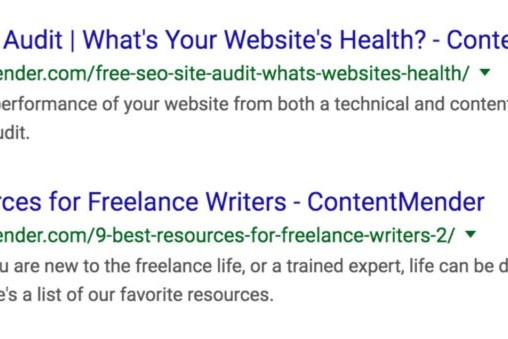Anyone working in the world of digital marketing understands the importance and subsequent ROI of a website with strong SEO and valuable content.
Sadly, many businesses have super valuable content but follow poor SEO practices, or amazing SEO and invaluable content that doesn’t deliver the simplest of marketing messages.
These types of businesses suffer from converting any visitors to customers/clients, which we’ll refer to as customers form here on out.
We offer many SEO and blogging tips in our blog, but since a substantial portion of converting visitors to customers, we’re going to focus on a term that is popular among online searches – SEO blog writing.

The reason it’s heavily searched is simple – this type of blog strategy helps you deliver your valuable content to educate your audience while simultaneously targeting those deeper search terms that will drive qualified traffic.
Here are 15 ways to create SEO friendly blog posts that will help convert those prospective customers into paying customers.
1. Great Content Is Key.
We can’t say it enough—the best way to drive traffic to your blog and boost not only your rankings in search engines but engagement with your readers is to provide quality content that readers care about.
Take the time to think about your goals for each post before you start writing (or typing).
Do you simply want to gain more readers, or do you have a narrower focus—inform them of a new trend, teach them something new, or highlight a cause, product, or service you’re passionate about? Audiences want relevant content that “gets” them where they are. How will you get to them?
2. Keywords Are Still King.
Don’t lose sight of conducting keyword research. Identify the relevant keywords users will search for on your blog and website and imbed them in your text accordingly. Chase the “longer-tail keywords” – basically the ones that more specific to your audience’s queries.
If you’re offering training on investing in real estate, don’t attempt to rank for “real estate investing,” which has monthly search volume of 49,500, but rather “real estate investing training,” which has a search volume of 210.
You’ll not only have a better chance of ranking for the latter keyword, but that keyword will drive more qualified traffic. Others searching for “real estate investing” may be looking for local properties to invest in or a company that offers investing services – not training.
3. Avoid Keyword Stuffing.
Overusing keywords, often referred to as “keyword stuffing,” is a clear red flag to search engines that your intention is to have your page rank higher than it would with fewer keywords. You want to write SEO blog content without going overboard on certain words.
4. Include Internal and External links.
Internal links are vital in the world of blogging. Many blogs don’t use them, but if you do, they can give you some impressive results. You can internally link to previous posts on a similar topic so readers can learn more about a subject from a different perspective, or link to other websites that can add value. Make sure you’re only linking to reputable websites that offer valuable content. And always have the internal links open in the same tab, and external links in a new tab.
5. Create Effective Anchor Text.
When using internal and external links, make sure to optimize your anchor text, The anchor text is the clickable, often blue text in a hyperlink. One best practice for SEO? Write anchor link text that’s descriptive and relevant to the page you’re linking to.
6. Optimize Meta Descriptions.
Meta descriptions – those tiny descriptions under the title (title tag) of an article in the search results – are another often-overlooked element that indirectly boost your SEO rankings. We say indirectly because Google says meta descriptions have no direct ranking factor. But when completely wisely, they back up the title and provide a reason for people to click through to your page or post. This traffic indirectly boosts your SEO by increasing click-throughs to your page.
Also, the keyword queried appears bold in the meta description, further attracting the eye and increasing a page visit. This is why it’s always a smart practice to include in your meta description the target keyword of that page, which is typically within the title.
7. User Experience Is More Important Than Ever.
Regardless of your industry or purpose for writing your blog, target audiences are more sophisticated than ever. They know what they’re looking for and where to find it, so if your blog doesn’t give readers what they want, they won’t hesitate to go to another site. Readers want content that is relevant to their lives and experiences.
8. Structure Your Post Carefully (AIDA model—Awareness, Interest, Desire, Action).
In terms of SEO and reader engagement, the most effective blog posts follow a certain structure. When writing, keep in mind the AIDA model (Awareness, Interest, Desire, Action). Each element of the model dictates how the reader should ideally respond to the post. Let’s take a closer look at each element:
- Awareness—What are you bringing to your reader’s attention? What promise are you making to them?
- Interest—Deliver on the promise you made in the first paragraph so your audience keeps reading.
- Desire—What is your goal for the post? This should come across here and ultimately connect with the reader. You want them to…
- Act—Move them to do what you’re asking. Be specific. Tell them to call now, or subscribe, or register. Always end your post with something definitive to achieve the greatest response.
9. Include Images.
Digital marketing is highly visual, so mix up your blocks of text with images, whether stock photos or photos you’ve taken yourself. Add some video or an infographic to complement statistics or data-heavy paragraphs to make the information easier for readers to grasp. Any infographics you create also work well on social media platforms as standalone posts or in the body of a shared blog post.
10. Be Aware of Similar Topic Tags.
Topic tags are frequently used so readers can find particular subjects within the blog. But be careful—you don’t want to use too many similar-sounding words. For instance, a financial planner would obviously use certain terms with some frequency, but when making tags, avoid words that sound too similar, such as “finance”, “financial”, or “finances”—just using one of those words as a tag would likely get the user to the posts they want.
11. Use Topic Clusters.
This is a relatively new approach to SEO. Although it’s used primarily for websites, it can work for a blog, too—mainly as an archival tool. In a topic cluster, a main hub, known as a “pillar” page, is recognized as the primary authority on a subject. Additional content pages link back to the pillar page and each other. This model is a way of organizing your site’s content pages more effectively.
12. Keep Your Content Updated.
One of the easiest ways to keep your blog in SEO’s good graces is to update the content as much as possible. Whatever your posting schedule, stick with it and give readers the fresh content they rightfully expect. Having trouble coming up with ideas for regular blog posts or keeping with your schedule? Consider outsourcing some of the writing to a blogger-for-hire, or tap other members of your marketing team (or like-minded thought leaders you’ve been wanting to work with) for guest posts.
13. Post A Mix Of Trendy And Evergreen Content.
When generating blog content, it’s essential to strike a balance between weighing in on hot topics and current events and timeless pieces that readers will always want to know about. For instance, if you own a restaurant supply business, you could write about “The 10 Hottest Kitchen Gadgets for 2020” (trendy) and “Watching Your Weight? 5 Ways to Still Enjoy Eating Out” (timeless). Your blog should be a marketing tool for your business, and to position yourself as a thought leader who can weigh in on of-the-moment subjects while still staying true to your core business. A blog is a great way to really make your skills and knowledge base shine.
14. Make Your Content Easy To Digest.
As mentioned in #7, pay attention to how you organize your post. Besides implementing the AIDA model, an effective structure typically looks like this:
- Attention-getting headline or title
- Catchy photo
- Introduction
- Lead-in
- Main points
- Conclusion
- Available space for comments and feedback
- Links to related posts, social sites for sharing
15. Optimize Your Blog Posts Constantly.
Even when your blog is delivering results you’re happy with, don’t stop there. Continue optimizing your blog posts by writing SEO-friendly content, refreshing older posts so they stay relevant, make sure all links (internal and external) still work and encourage reader engagement and interaction by including a blog/newsletter “subscribe/opt-out” button and always look to social media for opportunities to share your content and broaden your reach even further.
How do you make the most of SEO in your blog writing?






